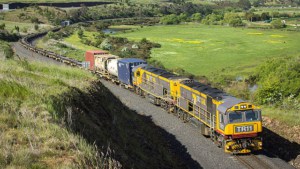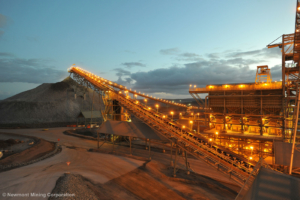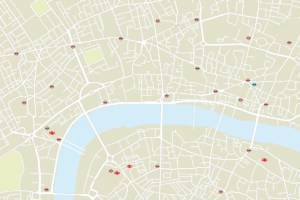Critical industries typically operate large-scale projects that cover wide areas and involve many people. For a communications system, it’s important to these industries that they have a large number of available talk channels, and that the network can reliably and consistently function over hundreds of kilometers.
TasRail in Australia, connects industry and commerce to major shipping ports and freight hubs across the state of Tasmania. Their communications network therefore needed to be large and reliable to ensure coordination of track movements, dispatch times, and train locations, whilst transferring data between control systems and locomotive vehicles.

Similarly, a mine in Papua New Guinea uses 2,600 Tait radios for their multi-modal operations. As well as owning the mine, the company also owns the thermal power station, the processing plant, the port, and the local buses. They deployed a Tait DMR Tier 3 network to ensure one reliable and secure network among all these areas could be used, and that employees from different sections of the company could communicate easily with each other.
In both these examples, a Tait DMR Tier 3 network was installed because of its scalability.
Bulk commodities are reliant on logistics and significant value can be realized by integrating the entire supply chain. The impressive radio frequency performance of DMR means reliable coverage can reach for thousands of kilometers, ensuring the entire supply chain is connected. Following Tait Communications’ successful deployment of a DMR Tier 3 network for Grant County Public Utility District in Washington State, USA, Tait installed an 80 site trunked DMR Tier 3 network for Manitoba Hydro Canada, along with the supply of more than 3,700 Tait 9300 portables and mobiles. Manitoba Hydro serves 548,700 electric customers and 269,700 natural gas customers using 15 hydroelectric generating stations across 649,950 square kilometers.

Tait base stations are engineered for optimum performance, surpassing the minimum requirements set by regulatory authorities. This means that a Tait DMR system can run on fewer sites with no reduction in reliability, saving on cost without compromising the scale of your network.
With Tait DMR Tier 3, trunking is easier than ever before, allowing large numbers of users to share channels on one network. This creates simplicity, and lowers costs. Lesotho Electricity Company found they needed to send multiple, simultaneous communications across their entire country, and Tait DMR Tier 3 was a cost-effective and reliable solution. Tait implemented a DMR Tier 3 system to optimize frequencies, doubling the channel capacity of the network and allowing greater number of data and voice channels.

Users of Tait DMR Tier 3 can take advantage of data services through the same communications network. Capabilities for distribution automation and GPS location data allows remote management, shortened incident response times, and therefore improved efficiency and worker safety. Carroll County, located in the state of Tennessee, USA, uses Man Down and Lone Worker data applications to ensure the safety of their volunteers across the 1,554 square kilometer county.
For big networks, firmware and software updates can be a large and costly task. Tait DMR Tier 3 with Tait EnableFleet is the only solution that can deliver firmware updates over a radio network. Tait EnableFleet provides centralized control and visibility of radio fleet programming, saving time and offering peace of mind. Over-the-air software configuration and firmware updates allow organizations to easily and actively manage a fleet of radios and how they operate, as well as apply new features. Significant costs and time are saved by minimizing the need for technicians to locate and travel to radios for physical upgrades. It also avoids the need to divert resources away from the operation.

Tait DMR has been designed for an easy migration from analog to digital. From the start, a major design goal of DMR was that the output spectrum must fit into the existing 12.5 kHz narrowband FM channels used by legacy analog systems. As DMR uses very simple transmitters, similar to those found in analog systems, the radios can be operated in dual mode, analog or digital. You want simplicity when you are upgrading an integral element of your operations. Tait stage and carefully manage the delivery of upgrade projects. Over 1,000 radios can be re-programmed within a day on the live working site, avoiding even a moment of disruption to operations.
If you would like more information about our DMR solutions, please contact us or leave a comment below.
Tait DMR is a smart investment, made to evolve.





